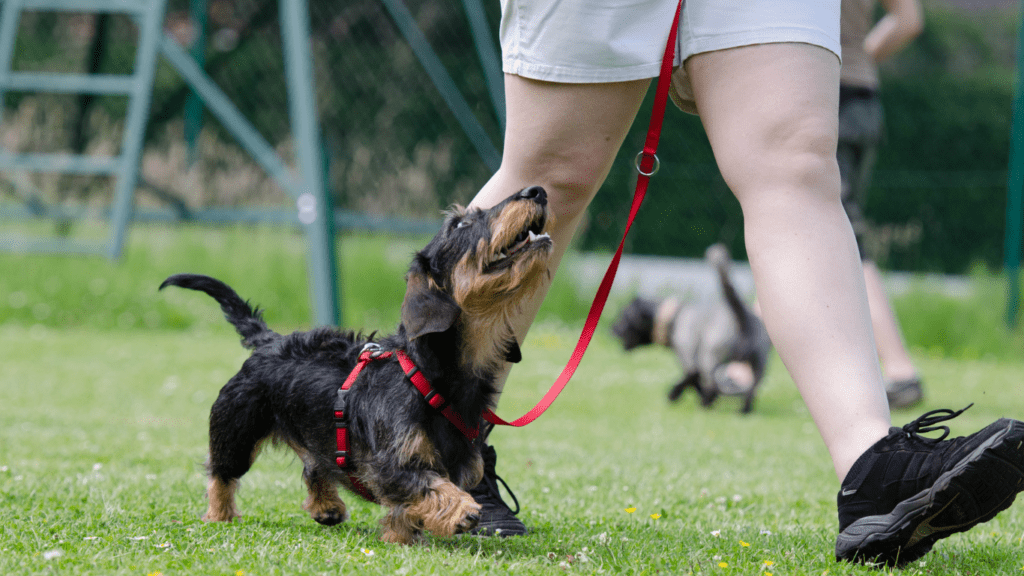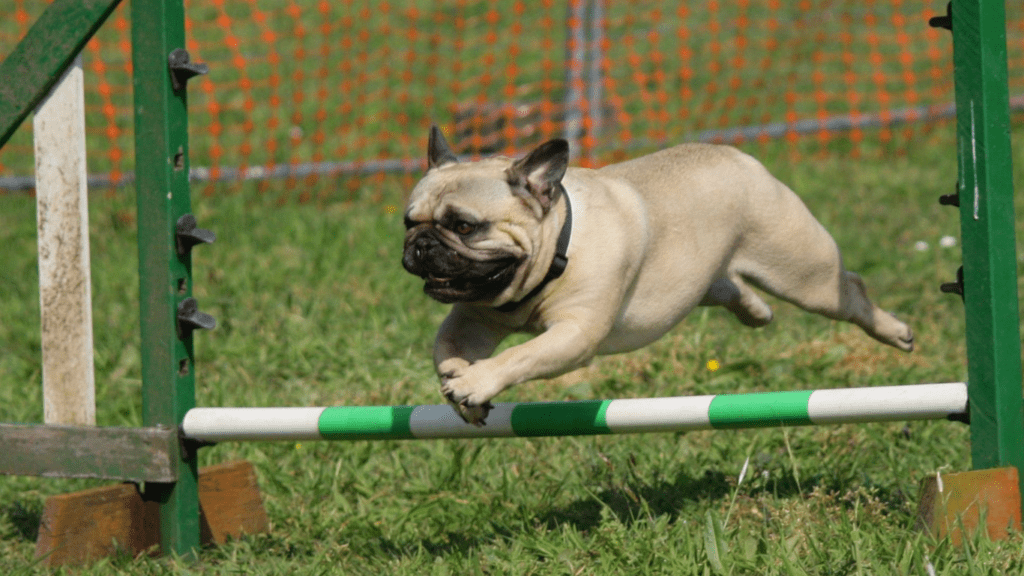Understanding Pet Training Tools
Pet training tools come in many varieties, each serving specific functions to aid in the training process. The primary goal is to make training efficient and enjoyable for both pets and owners.
Types of Training Tools
- Clickers
Clickers are compact, handheld devices that emit a distinct clicking sound when pressed. They’re used to mark specific behaviors, making it easier for pets to understand what actions yield positive reinforcement. For example, dogs quickly learn that sitting on command results in a click and a treat. - Harnesses and Leashes
Harnesses and leashes provide control over a pet during training sessions. Harnesses, particularly, prevent strain on a pet’s neck and distribute pressure evenly across the body. This is essential for dogs, ensuring their safety and comfort. Examples include front-clip harnesses designed to discourage pulling. - Treats and Reward Systems
Treats serve as immediate rewards for desired behaviors, reinforcing positive actions. High-value treats, usually small and easily consumable, are recommended. Additionally, reward systems can include verbal praise or petting, giving pets various forms of positive feedback. - Training Collars
Training collars, such as prong or shock collars, offer correction levels to dissuade negative behaviors. These should be used with care and often under professional guidance to avoid causing distress to a pet. Examples include vibration or beep collars that use non-harmful stimuli. - Training Mats and Pads
Training mats and pads are useful for housebreaking pets, particularly puppies. They absorb waste, helping in teaching pets where to go and where not to go. These tools can simplify the cleaning process and make indoor training manageable.
Choosing the Right Tools
Selecting the appropriate training tools depends on the pet’s specific needs and temperament. For instance, a high-energy dog benefits more from a durable leash and high-value treats, while a timid cat may respond better to clickers and gentle verbal praise. Always consider the pet’s comfort and safety first when choosing any training tool.
Incorporating these tools effectively into daily training routines can accelerate learning and enhance the bond between pet and owner.
Essential Pet Training Tools

Having the right pet training tools can make the process smoother and more effective. Below are key tools that enhance training for any pet.
Leashes and Collars
Leashes and collars ensure control and safety during training. Standard leashes, retractable leashes, and training leashes each serve different purposes. Standard leashes (4-6 feet) provide control in everyday situations. Retractable leashes, extending up to 26 feet, give pets more freedom during walks. Training leashes, usually longer, help teach recall and distance commands. Collars come in various types, including flat collars, martingale collars, and training collars. Flat collars are suitable for most pets. Martingale collars prevent dogs from slipping out. Training collars, such as prong collars, require proper fitting and use to avoid harm.
Clickers and Whistles
Clickers and whistles mark behaviors and gain a pet’s attention. Clickers produce a consistent sound that marks the exact moment a pet performs the desired behavior. Users pair the sound with a treat to reinforce the behavior. Whistles provide an audible cue that can be heard from a distance. They’re helpful for recall training in larger areas. Examples include the Acme 211.5 whistle for dogs or silent whistles, adjustable to different frequencies.
Treats and Rewards
Treats and rewards motivate pets during training. High-value treats, such as small pieces of chicken or commercial training treats, grab attention and maintain engagement. Varying treats keeps pets interested, especially during longer sessions. Non-food rewards also play a role. Verbal praise, favorite toys, and petting serve as effective motivators. Using a mix prevents reliance on any single reward type and maintains balanced training.
Specialized Training Tools
Specialized training tools can address specific needs during the training process, enhancing the experience for both pets and their owners.
Training Pads and Mats
Training pads and mats assist in housebreaking pets and managing accidents. Pads, often infused with attractant scents, encourage pets to eliminate in designated areas. Mats, made of absorbent materials, provide a reusable option, suitable for those aiming to reduce waste. Regular cleaning and replacement ensure effectiveness and hygiene. For instance, the American Kennel Club Training Pads feature a 6-layer composition that locks in moisture, providing superior absorbency.
Training Crates and Pens
Training crates and pens aid in creating a controlled environment for pets, promoting positive behavior and safety. Crates, when properly sized, offer a secure space that mimics a den-like environment, helping with housebreaking and reducing anxiety. Pens provide a larger enclosed space, ideal for giving pets freedom while keeping them contained. Consistent use reinforces boundaries and routines. For example, the MidWest Homes for Pets Dog Crate includes a divider panel, allowing adjustment as pets grow.
Choosing the Right Tools for Your Pet
Making the correct choice of training tools benefits both you and your pet. The following factors can guide you in selecting effective tools.
Size and Breed Considerations
Knowing your pet’s size and breed helps you choose the right tools. Smaller breeds, like Chihuahuas or Pomeranians, require lightweight collars and leashes. Larger breeds, such as Labradors or German Shepherds, need sturdier equipment. For example, harnesses can distribute pressure evenly, especially for dogs prone to pulling.
Behavioral Needs
Identifying your pet’s behavioral needs tailors your approach. If a pet exhibits anxiety, consider tools like calming collars or anxiety wraps. For pets displaying excessive barking, training tools like ultrasonic bark control devices can help. Positive reinforcement tools, like clickers and treats, work well for most behavioral training. If housebreaking a puppy, training pads and crates are essential.
Tips for Effective Training
Effective pet training requires specific strategies for ensuring success. Focus on core methods to create a strong foundation for training.
Consistency and Patience
Consistency and patience are critical for effective pet training. Maintain a regular training schedule to help pets understand expectations. Use the same commands and rewards to reinforce desired behaviors. Observe your pet’s progress and adjust techniques accordingly to avoid frustration. Patience is essential, especially when teaching complex behaviors. Recognize that each pet learns at its own pace, so avoid rushing the process.
Positive Reinforcement Techniques
Positive reinforcement techniques enhance training effectiveness. Use treats, praise, and toys to reward your pet when it performs desired behaviors. Clicker training is a popular method that combines a distinct sound with positive reinforcement. For example, click the device when the pet performs the correct action, then immediately provide a treat. This method helps pets associate the sound with a reward, accelerating the learning process.


 Veterinary Advisor & Health Expert
Anthony Brooks is the in-house Veterinary Advisor at Pet Paw Shack, offering expert advice on pet health, disease prevention, and general veterinary care. With years of experience as a licensed veterinarian, Anthony helps guide pet owners through essential topics like vaccinations, routine checkups, and emergency care. His commitment to keeping pets healthy ensures that Pet Paw Shack delivers trusted and accurate medical insights.
Veterinary Advisor & Health Expert
Anthony Brooks is the in-house Veterinary Advisor at Pet Paw Shack, offering expert advice on pet health, disease prevention, and general veterinary care. With years of experience as a licensed veterinarian, Anthony helps guide pet owners through essential topics like vaccinations, routine checkups, and emergency care. His commitment to keeping pets healthy ensures that Pet Paw Shack delivers trusted and accurate medical insights.
